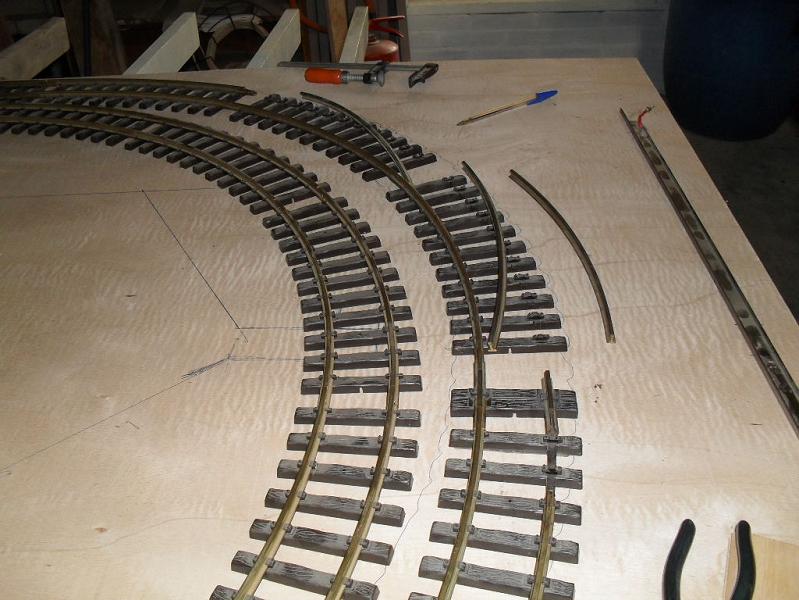disclaimer: the following measurements are measured, not calculated. (as such they are aproximations only)
circumference of circles has to do something with “pi” (3,14).
the different lengths of inner and outer rail are dependent of the gauge (45mm)
on a full 45mm circle the outer rail is longer four times the gauge (45mm x 4 = 180mm or 7.08")
or easier: each 90° curve in largescale is 45mm or 1.77" longer on the outside.
if you have a “L” type circle, you got five 90° curves to the right, and one 90° curve to the left. (no chance, to evade that)
one right and one left cancel each other out. that leaves you with four 90° curves to the right (in your case) so, if ou build everything from flex, you got 180mm/7.08" too much on the inner side. (half a mm for every degree)
your only choice is, in how many pieces you want to saw off this overhang.
just to complicate things (talking LGB geometrics):
for every piece of R1 curve (30°) you have to deduct or add 15mm/0.6" for every piece of R3 curve (22.5°) 12mm/0.47".
being parsimony, one can stagger the rails. that has only two set backs: fiddling a lot with fitting sleepers and a pain in the … fingers when some day, you want to take the track up again.
personally i don’t use flex. (bought about 400 ft of R1 curves very cheap) but i personalize my track into varying curves and straights.
the inner rails of the R1 curves have the same length as straights. so i straighten them and make one foot straight track, that fits into the LGB geometry.
with the longer outer rails i normally bend the inner rails of the future curves into the desired form and push them on the sleeper webbing.
that way i have a fine guide (the empty outer rail"nails") for bending the outer rails.
staggering the connectors as the rails come, i have to saw just once per complete curve.
